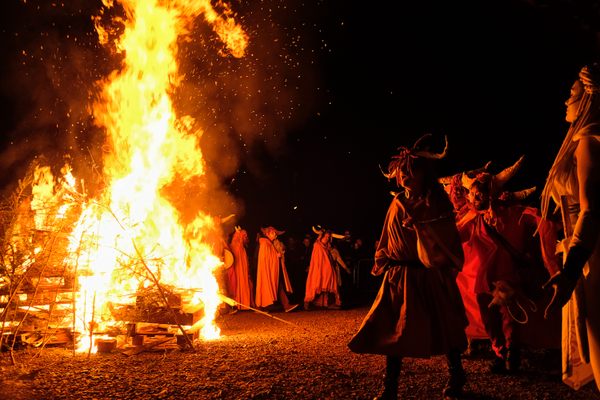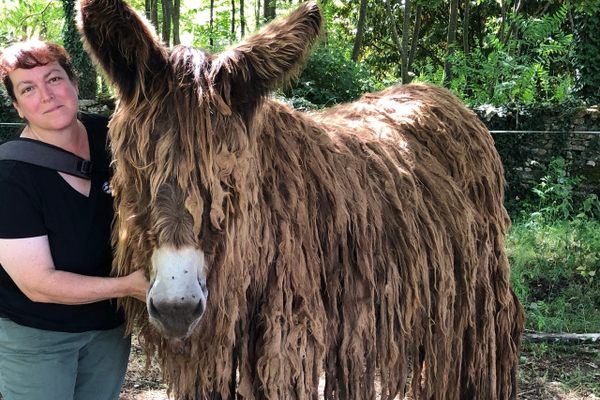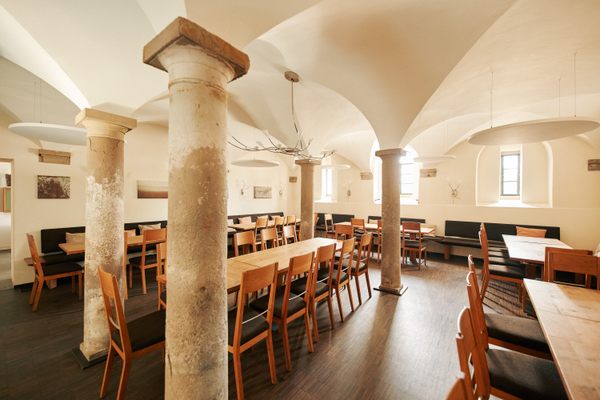Beltane Is About More Than Fire and Fertility
The ancient “Celtic” start of summer is rooted in animal husbandry—and it’s not on May 1.
As reimagined ancient traditions go, Beltane is one of the flashier ones. Modern events such as Edinburgh’s iconic Beltane Fire Festival and smaller bonfire gatherings, particularly in Ireland and Scotland, light it up around April 30 and May 1 each year in what many consider a symbolic cleansing and celebration of renewal. Even before the bonfires get blazing, modern Beltane—often rolled in with more general May Day festivities—is a visual feast featuring colorful flowers, dancing, May Queens, Green Men, and other revelry.
The ancient roots of Beltane are more mundane: It had a lot to do with cows, and it wasn’t on May 1. It did, however, mark the most important transition of the year.
Travel back about 6,000 years, to the time when hunter-gatherers across Northern Europe were starting to settle down. Agriculture, spreading north and west across the continent, had arrived. People living in what’s now Ireland and the United Kingdom were starting to sow crops and raise livestock. With this lifestyle shift came a new focus on charting the seasons to regulate farming and herding activities. Over millennia, early agrarians around the world, from China to Mesopotamia, developed regional agricultural calendars based on the movement of the heavens, most commonly the sun and moon, and the ancient people living in the British Isles were no different.
Today, the system that was used in Ireland, Scotland, the Isle of Man, and some adjacent areas is generally called the Celtic calendar, despite the fact that it predates the arrival of the Celts around 2,500 years ago. Archaeologists have found stone circles and other pre-Celtic sites throughout the British Isles that align with important dates on the Celtic calendar—even though they were built more than a millennium before the Celts turned up. Scotland’s Balnuaran of Clava cairns (also known as the Clava Cairns), for example, are at least 3,800 years old but include “a clear structural marking” of not only the solstices and equinoxes, but “also the ‘Celtic’ quarter days,” wrote independent scholar David Trevarthen, whose findings on the site were published in the Cambridge Archaeological Journal.

Along with the solstices and equinoxes, the four quarter days, also known as cross-quarter days, are the most prominent dates in the Celtic calendar. Each quarter day occurs halfway between a solstice and an equinox. The cross-quarter day most familiar to us comes between the fall equinox and winter solstice: Samhuinn, also known as Samhain, or, of course, Halloween, which heralded the arrival of the dark, lean season of winter. The cross-quarter day of Imbolc, halfway between the winter solstice and the vernal equinox, marked the start of lambing season. It was also a time when early agrarians were anxiously waiting for signs of spring, and is a precursor to the modern Groundhog Day.
There’s also Lughnasadh, or Lúnasa, the cross-quarter day marking the beginning of harvest time, halfway between the summer solstice and autumn equinox. (Alas, Lughnasadh has not inspired any traditions of prophetic rodents or dressing up to demand treats and threaten tricks, and remains relatively obscure today.)
For the early inhabitants of the British Isles, the most important cross-quarter day of the ancient agrarian calendar wasn’t Imbolc, Lughnasadh, or Samhuinn. It was Beltane (other spellings include Beltaine and Bealltainn), which marked the start of summer. It was celebrated midway between the spring equinox and summer solstice which, astronomically speaking, varies each year but falls around May 5 or 6.
In The Encyclopedia of Celtic Mythology and Folklore, Patricia Monaghan wrote that Beltane “was essentially an agricultural festival,” and marked the time when cattle, particularly important in ancient Ireland, were driven from sheltered winter locations to buaile, summer pastures bright with fresh grass. She noted that the famous fires of Beltane, now associated with purification, “may have originated simply in the need to burn off brush before the fields and pastures were put into use.”

While farmers had likely already sown barley and other early spring crops before Beltane, the cross-quarter day also marked the start of the growing season in earnest. Lughnasadh and Samhuinn were all about gathering existing resources, but Beltane was the crucial time to create those resources. If you didn’t move your cattle to better pastures and get your garden in during this first spurt of summer, you probably wouldn’t have enough to survive the following winter.
All of Beltane’s other elements, from purification to often lusty rituals around fertility, were layered on top of its original purpose on the agricultural calendar. Celebrating Beltane would have been a “luxury” for the early agrarians, whose main concerns were “the practicalities of producing food for survival,” Trevarthen wrote in a paper on the agricultural, pre-Celtic origins of Beltane, published in Cosmos, the journal of the Scotland-based Traditional Cosmology Society.
Eventually, as calendar systems were codified across Europe (with first the Julian and then Gregorian calendars organizing the year), Beltane became fixed on April 30/May 1, bringing it into closer alignment with other flower-and-fire festivals, such as the ancient Roman Floralia and Central Europe’s Walpurgisnacht, or Čarodêjnice. All of these spring-into-summer rites likely began as ancient acknowledgments that, as Pete Seeger sang, “to everything there is a season, and a time to every purpose.”














Follow us on Twitter to get the latest on the world's hidden wonders.
Like us on Facebook to get the latest on the world's hidden wonders.
Follow us on Twitter Like us on Facebook